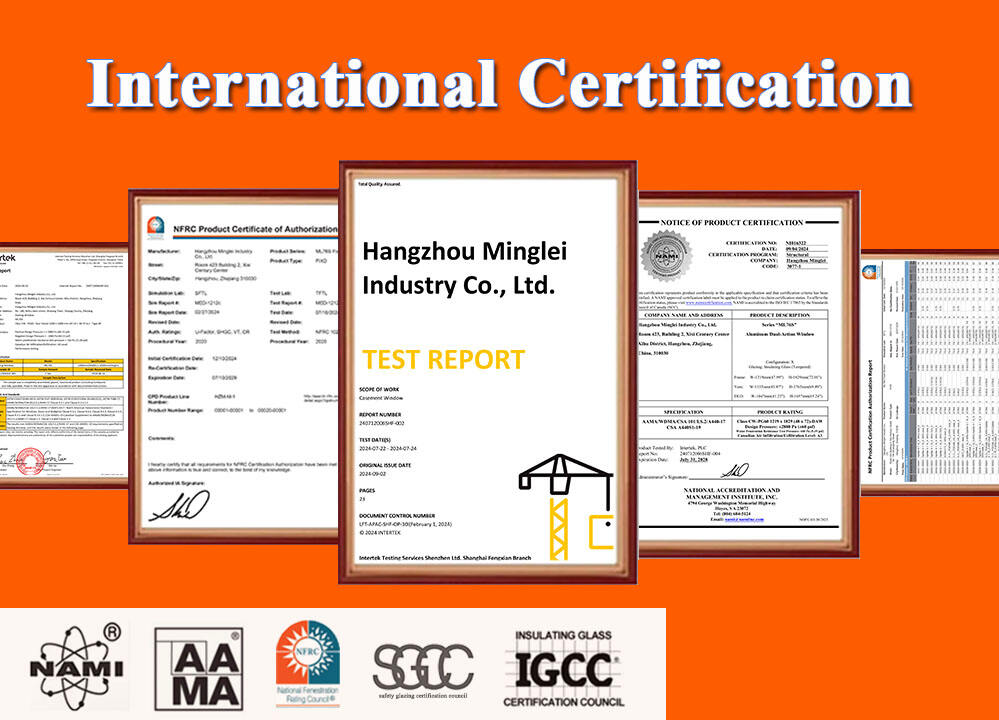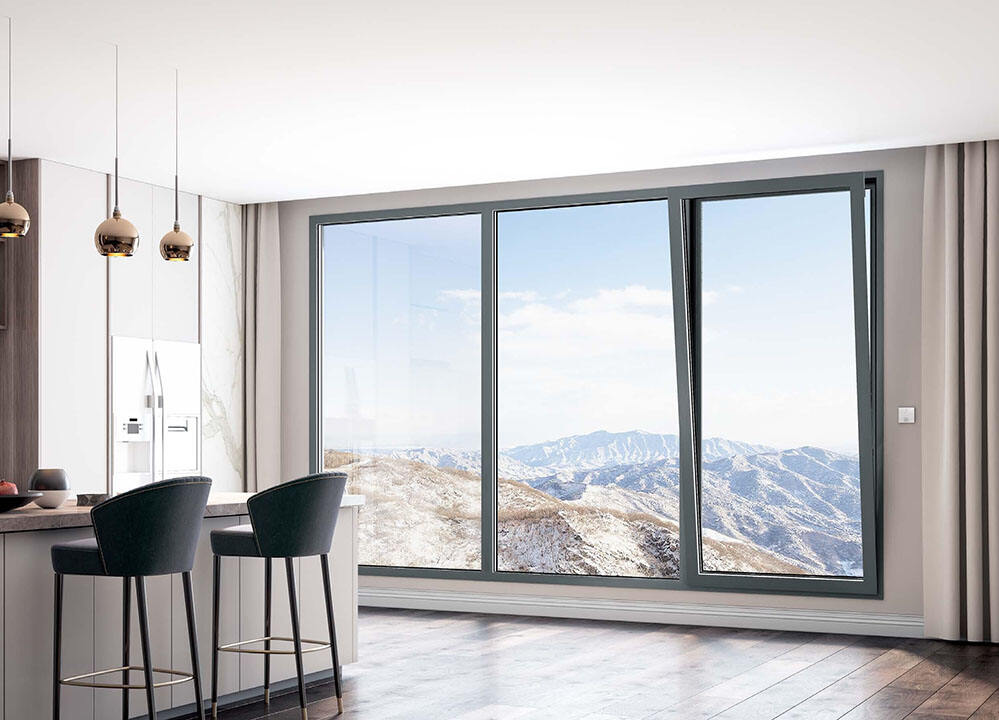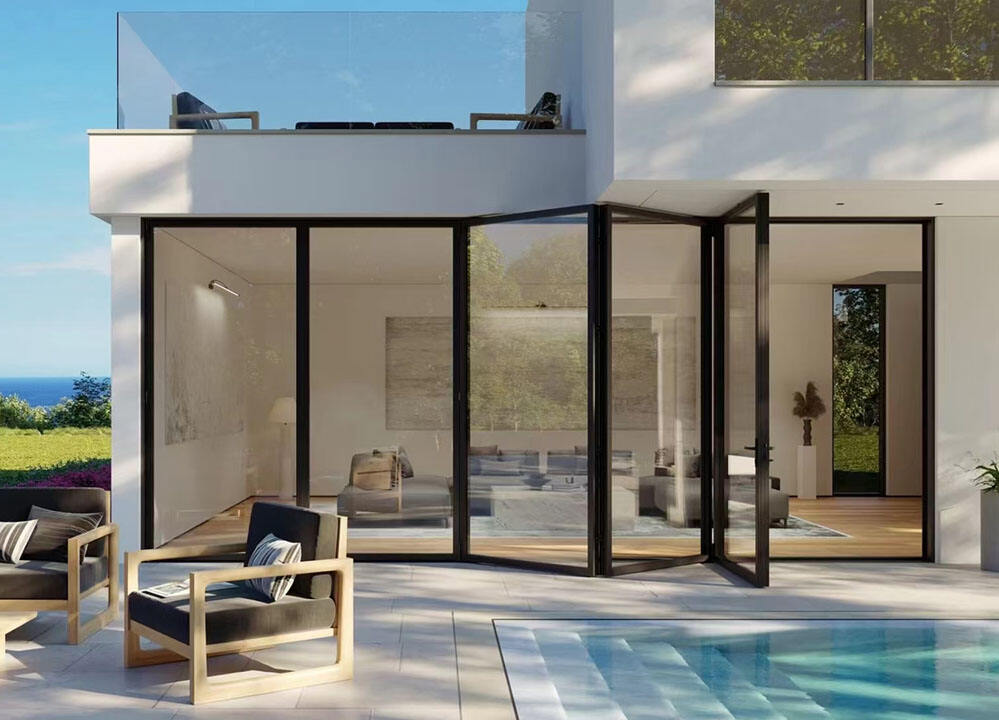Miksi kallistus- ja kääntöikkunat toimivat paremmin kuin muut avausmenetelmät samoissa teknisissä tiedoissa?
Valitessasi ikkunoita kotiisi, saatat miettiä erilaisia avaustapoja: liukui-ikkunat, ulkoavaavat ikkunat, yksinkertaiset sisäänavaavat jne. Näiden joukossa asiantuntijat suosittelevat usein kallistus-kääntöikkunoita parhaaksi vaihtoehdoksi korkean suorituskyvyn kodeihin. Saatat miettiä: kun profiilit, lasit ja tarvikkeiden tekniset tiedot vaikuttavat samankaltaisilta paperilla, miksi kallistus-kääntöikkunat tarjoavat silti parempaa käytännön suorituskykyä?
Vastaus ei piile yhdessä komponentissa, vaan erinomaisessa yhteistoiminnassa niiden ainutlaatuisen avaustavan, tarkan rakenteellisen suunnittelun ja korkean suorituskyvyn tarvikkeiden välillä , mikä yhdessä luo vertaansa vailla olevan kokonaisvaltaisen suorituskyvyn.
1. Parantunut tiiviys: Monipistelukituksen voima
Tämä on keskeisin syy kallistus-kääntöikkunoiden erinomaiseen suorituskykyyn.
Miten se toimii: Kun käännät kahvaa, monimutkainen laitteistojärjestelmä aktivoi useita lukituspisteitä (tai espagnolettiniittejä) siistin kehyksen ympärillä, vetäen sitä tiukasti kiinni kehystä vasten. Tämä toiminto muistuttaa tiivistetyn kannen kiinnittämistä laatikkoon useilla niiteillä, varmistaen, että tiivistysvälikkeet puristuvat tasaisesti ja tehokkaasti koko kehyksen ympäri.



Vertailu muihin tyyppilajeihin:
Liukuikkunat: Perustuvat harjatiiviisiin, jotka luonteeltaan jättävät toiminnallisen raon siistin ja kehyksen väliin. Tämä tekee korkean ilman- ja vesitiiviysasteen saavuttamisesta periaatteessa haastavaa.
Kipinäikkunat (ulkoavaavat): Vaikka ne voivat käyttää monipistelukituksia, tiivistys perustuu kahvan mekanismin yksisuuntaiseen vetoon. Kippa-kierto-ikkuna on suljettuna tehokkaasti "puristettu" kehykseensä, mikä johtaa usein tasaisemmin jaetun sekä paremman tiivistyksen tiivistysvälikkeissä.
Tämä voimakas tiivistepaine varmistaa, että ikkuna suljettuna hyödyntää täysin korkealaatuisten tiivisteiden ja profiilien ominaisuudet saavuttaen huippuluokan ilman- ja vesitiiviys.
2. Ylivoimainen tuulikuorman kestävyys
Ikkunan kestävyys tuulipainetta vastaan riippuu paitsi profiilin lujuudesta, myös rakenteen stabiilisuudesta kuormitustilanteessa.

Stabiili "upotettu" rakenne: Suljettuna karmi avautuvassa ikkunassa istuu täydellisesti upotettuna kehyksen sisään. Yhdessä monipistelukitusjärjestelmän kanssa se muodostaa erittäin jäykän ja stabiilin kokonaisuuden. Kun voimakas tuuli iskee, paine jakaantuu tasaisesti koko kehykselle ja useisiin lukituspisteisiin, mikä vähentää merkittävästi paikallisen taipumisen ja narinaamisen riskiä.
Vertailu muihin tyyppilajeihin:
Liukuikkunat: Karmi lepää radoilla urassa ja yleensä sillä on liikkuvuutta yläosassa. Suuren tuulipaineen alla ne ovat alttiita narinaamiselle ja niissä voi jopa tapahtua derailoitu, tarjoamatta näin heikkoa stabiilisuutta.
Avava ikkuna: Sarvia on täysin konsolilla rakennuksen ulkopuolella. Rasitus keskittyy saranoihin, jotka kantavat merkittävää vipuvaikutusta. Ääriolosuhteissa tämä aiheuttaa suuremman mahdollisen turvallisuusriskin.
Tällöin kallistus-kääntöikkunoiden upotettu rakenne tarjoaa sisäisen rakenteellisen edun mekaanisessa stabiilisuudessa.
3. Erinomainen lämpöeristys ja äänieristys
Lämpöeristyksen ja ääneneristyksen ydin on jatkuvan, tiiviin esteen luominen. Tässä kohdassa kallistus-kääntöikkunat loistavat.

Ongelman juuren syyn ratkaiseminen: Niiden ylivoimainen ilmatiiveys tarkoittaa ilmavuotoreittien täydellistä estämistä. Ilmaliike on ensisijainen syy energiahukkaan (vaikuttaa lämpöeristykseen) ja äänen etenemiseen (vaikuttaa akustiikkaan). Ilman vuotoja sisätilojen ilmastoitettu ilma (lämmin tai kylmä) pysyy sisällä, eikä ulkoinen melu pääse sisään raosta.
Synerginen vaikutus: Vain erinomaisen ilmantiiviysperustan avulla voidaan hyödyntää täysimääräisesti lämpökatkaisuprofiilien ja eristyslasipaneelien (jopa argonkaasulla ja Low-E-pinnoitteella) suorituskyky. Vuotava ikkuna heikentää yleisilmaisua eristystä ja akustista suorituskykyä riippumatta lasin laadusta.
4. Toiminnallisuuden ja turvallisuuden täydellinen yhdistelmä

Ydinominaisuuksien lisäksi kääntö- ja kallistusikkunat tarjoavat merkittäviä käyttäjäkokemukseen liittyviä etuja:
Kallistustilan tuuletus: Kallistusasennossa ikkunan yläosa on hieman vinossa sisäänpäin. Tämä mahdollistaa turvallisen, kaiken sään tuuletuksen (sade ei todennäköisesti pääse sisään) ja koska ilmanottoaukko on korkealla, se edistää tehokasta ilmanvaihtoa huoneessa. Kapea aukeama tarjoaa myös erinomaisen turvallisuuden ja lasten turvallisuuden .
Helppo puhdistus: Siivut voidaan avata täysin sisäänpäin, jolloin voit puhdistaa lasin molemmat puolet helposti ja turvallisesti kodistasi – ratkaisevan tärkeä etu korkeissa rakennuksissa.
Ei ulkoisia esteitä: Sisäänpäin avautuva rakenne ei vaikuta rakennuksen ulkokuoren ulkonäköön eikä aiheuta mahdollisia vaaroja, joita voi syntyä ikkunoiden ulospäin aukeavista siiveistä voimakkaiden tuulien aikana.
Johtopäätös
Samaa teknistä erittelyä (profiilit, lasit, tiivisteet) käytettäessä kääntö- ja kallistusikkunan suorituskyvyn etu ei johdu pelkästään materiaalien "kasautumisesta", vaan on osoitus suunnittelufilosofia .
Korkeasti integroidusta, synergisestä järjestelmästä korkeasti integroidusta, synergisestä järjestelmästä . Monipistelukitus, upotusrakenne ja monipuolinen kallistustoiminto yhdessä muodostavat kokonaisvaltaisen ratkaisun, joka on parempi ilmantiiviys-, vesitiiviys-, tuulikuormien kesto-, lämpöeristys-, äänieristys-, turvallisuus- ja käyttömukavuustasoissa. Siksi kun pyrit kotisi viimeiseen mahdolliseen suorituskykyyn, mukavuuteen ja turvallisuuteen, kääntö- ja kallistusikkuna on insinööritodistetusti älykäs valinta.
 EN
EN
 AR
AR
 CS
CS
 DA
DA
 NL
NL
 FI
FI
 FR
FR
 DE
DE
 EL
EL
 HI
HI
 IT
IT
 JA
JA
 KO
KO
 PL
PL
 PT
PT
 RU
RU
 ES
ES
 SV
SV
 IW
IW
 ID
ID
 LV
LV
 LT
LT
 SR
SR
 SK
SK
 SL
SL
 UK
UK
 VI
VI
 ET
ET
 HU
HU
 MT
MT
 TH
TH
 TR
TR
 FA
FA
 MS
MS
 GA
GA
 HY
HY
 UR
UR
 BN
BN
 GU
GU
 TA
TA














